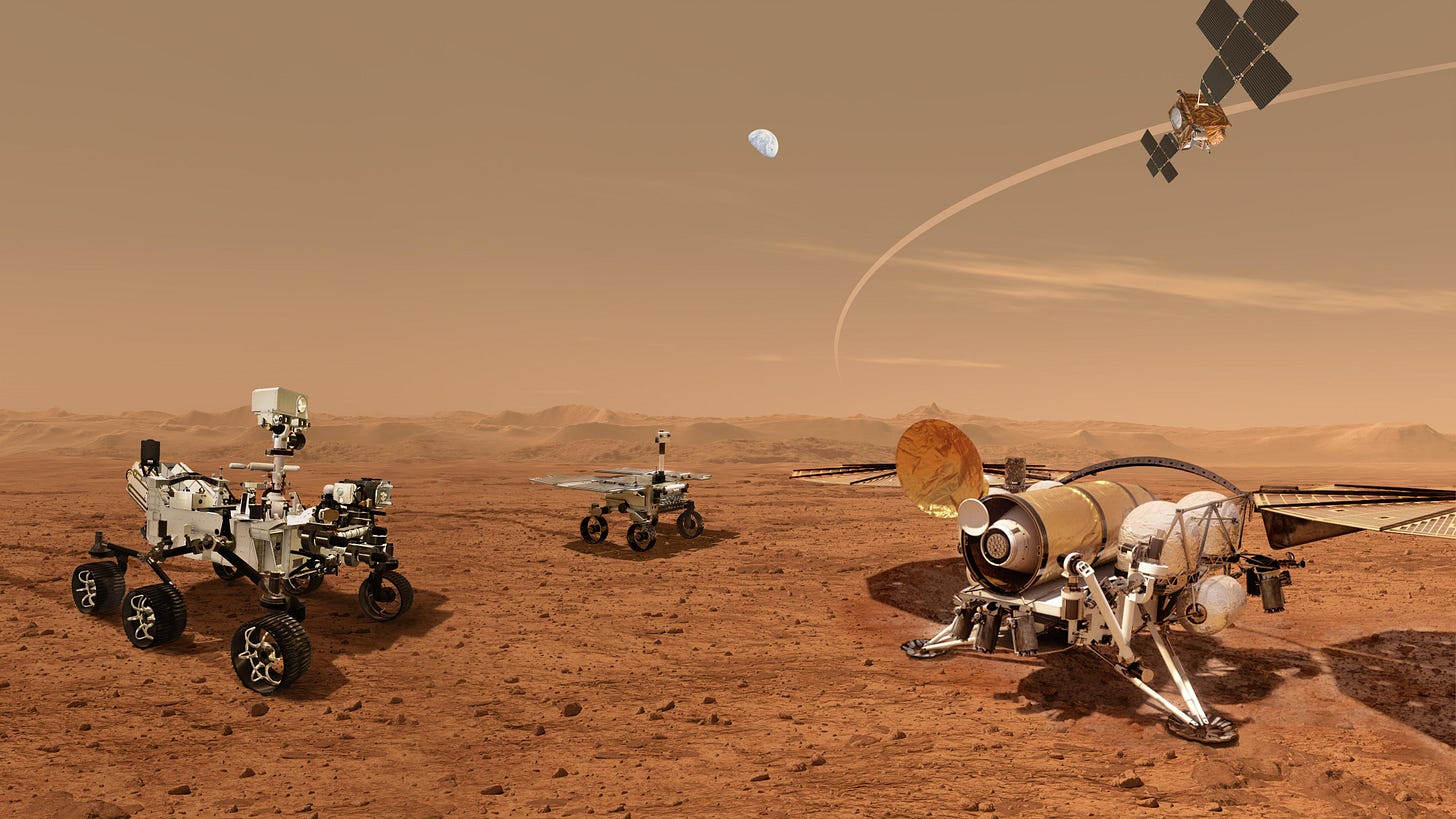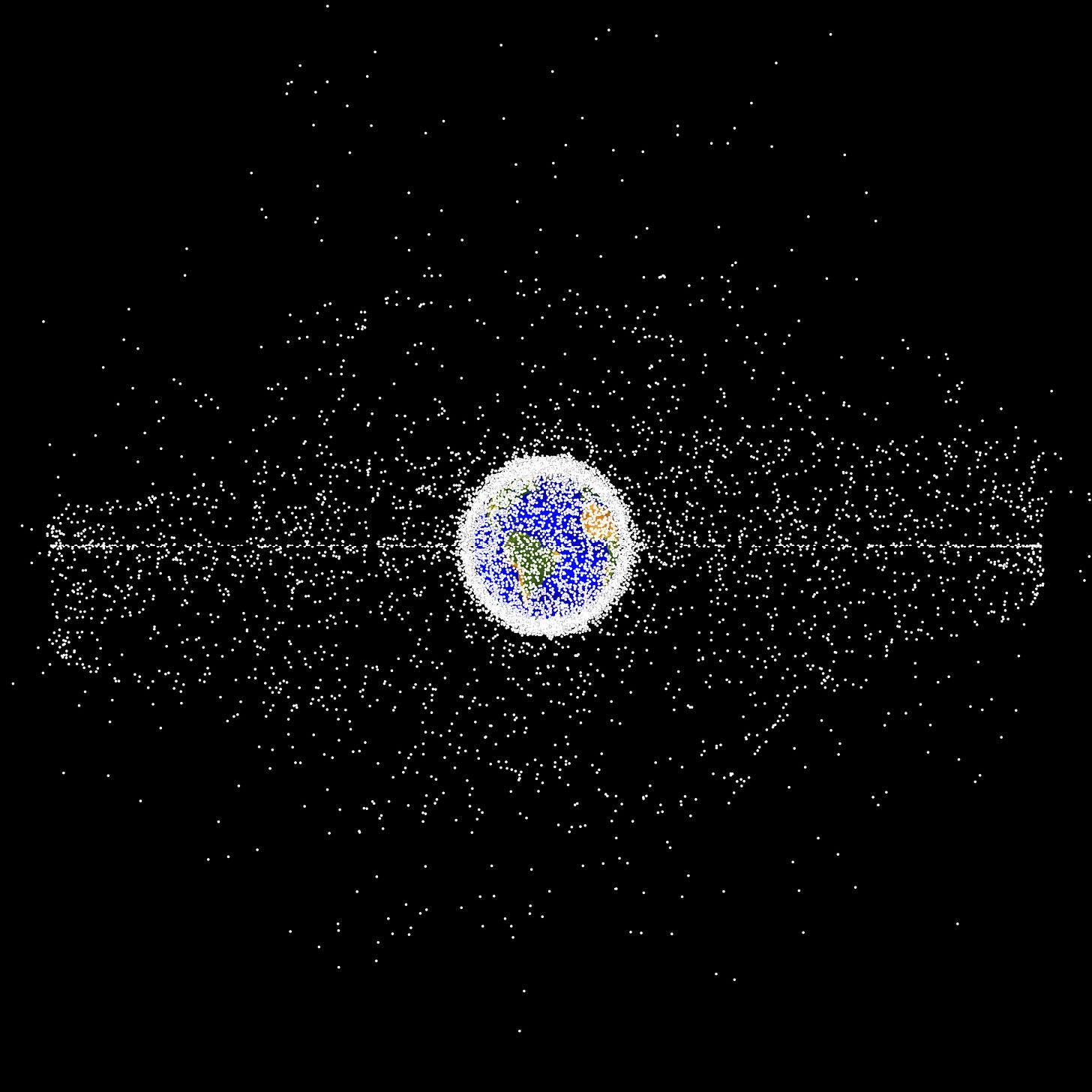Hello subscribers and those who have joined recently. A bonus post this week.
Go to the Moon, bring back those samples from Mars, and build a space tug to safely deorbit and burn up the International Space Station (ISS) at the end of the decade. Those are the priorities for the Biden Administration for space. The President’s recently released budget also sprinkles more money on the program to deal with space junk.
Former astronaut and now Associate Administrator of NASA, Bob Cabana, told reporters, “We want to continue to establish our exploration program to learn on the Moon as we progress on towards Mars. We want to continue to learn about our planet in the Earth Observation System. And we're going to continue our leadership in aeronautics.”
SIGNIFICANT INCREASE
Overall, NASA’s proposed budget is just over 27 billion dollars. That’s a 7% increase from this year’s budget and comes in a time of increasing talk about cutting costs, the deficit, and the debt.
Budget proposals are statements of what an administration thinks is important. New money, and more money, are going to programs the Biden Administration thinks are priorities.
Artemis Moon Program- Request: $8.1 billion dollars. This is a half billion dollars more than this year’s budget, a nearly 8% increase. NASA says this amount of money will fully fund the next two Artemis missions. Artemis 2 will be the first manned mission for the new lunar program. The four-person crew (including a Canadian) will circle the Moon in an Orion capsule. There will be no landing on the Moon. That will come during Artemis 3. Two of the members of that crew will move from the Orion to a SpaceX Starship for the powered landing on the lunar surface. The Starship has not reached orbit yet, much less carried astronauts.
NASA is building the infrastructure to stay on the Moon. That will provide learning for how to survive on Mars. First there will be a lunar orbiting space station known as Gateway. There is hope for a second human landing system. I asked Cabana about that and he said NASA is working, “really hard to ensure that we have both the SpaceX and other landers. Competition is good. This form of redundancy is excellent.”
NASA also wants to build habitats, power plants, pressurized rovers, and more to allow the lunar surface to have what the ISS has had for 20 years, a sustained human presence.
There are no suits built yet to walk on the Moon. A prototype was just revealed. There is a lot to do, but NASA says $8 billion will get us back to the Moon.

Mars Return Mission- Do you remember the pictures from the latest rover to arrive on Mars? Perseverance also carried a little helicopter that sent back some striking video. Perseverance has been busy. Think of the rover as a little miner. It has been moving across the surface of Mars and digging out samples of the Martian surface. Those samples are sealed in cylindrical containers and dropped by the rover at specific spots. Those samples need to come back to Earth for study. While NASA built the rover and this system of collecting and depositing samples along its route, the agency has not built the vehicle to bring back those samples.
Months ago, NASA changed its plan for retrieval of the soil samples and is now increasing funding for the Mars Return Mission the includes a rocket and a vehicle to go to Mars, pick up those samples, and return. NASA wants to increase its spending by 15% to nearly a billion dollars. The $949 million is just the latest down payment. It’s expected this mission will be near the end of this decade.
ISS Deorbit Tug- The ISS is expected to be decommissioned in 2030. The plan has been to use the Russian power module to bring the space station back toward Earth in a safe manner allowing it to mostly burn up in the atmosphere. NASA wants redundancy. It is spending $180 million to start studying and potentially building a space tug to deorbit the ISS. A finished tug could cost as much as a billion dollars. NASA says it’s early in its planning and it wants to spend the $180 million to get started.
Space Junk- A new report is out about space junk. These are dead satellites still in orbit, or pieces of spacecraft that have been used as targets in the testing of anti-satellite weapons. It is a worry and NASA wants to do something about the problem. NASA spent $30 million studying space junk last year. It wants to increase that spending by $39 million. That’s a 30% increase for a problem that is growing with the increased pace of space flights and satellites launching.
Of course, this is just the Administration’s proposal to Congress. While NASA has seen bipartisan support lately this could be a tough sell with some Republicans talking about cuts. That could be why one of the latest news releases from NASA is, “NASA’s State Fact Sheets Highlight Economic Impact in All 50 States, DC.” The budget battle for space is underway.










I didn't know this, but apparently over 630 objects and satellites have broken apart or exploded in space since 1957:
https://romanshapoval.substack.com/p/5g-satellites-a-threat-to-all-life